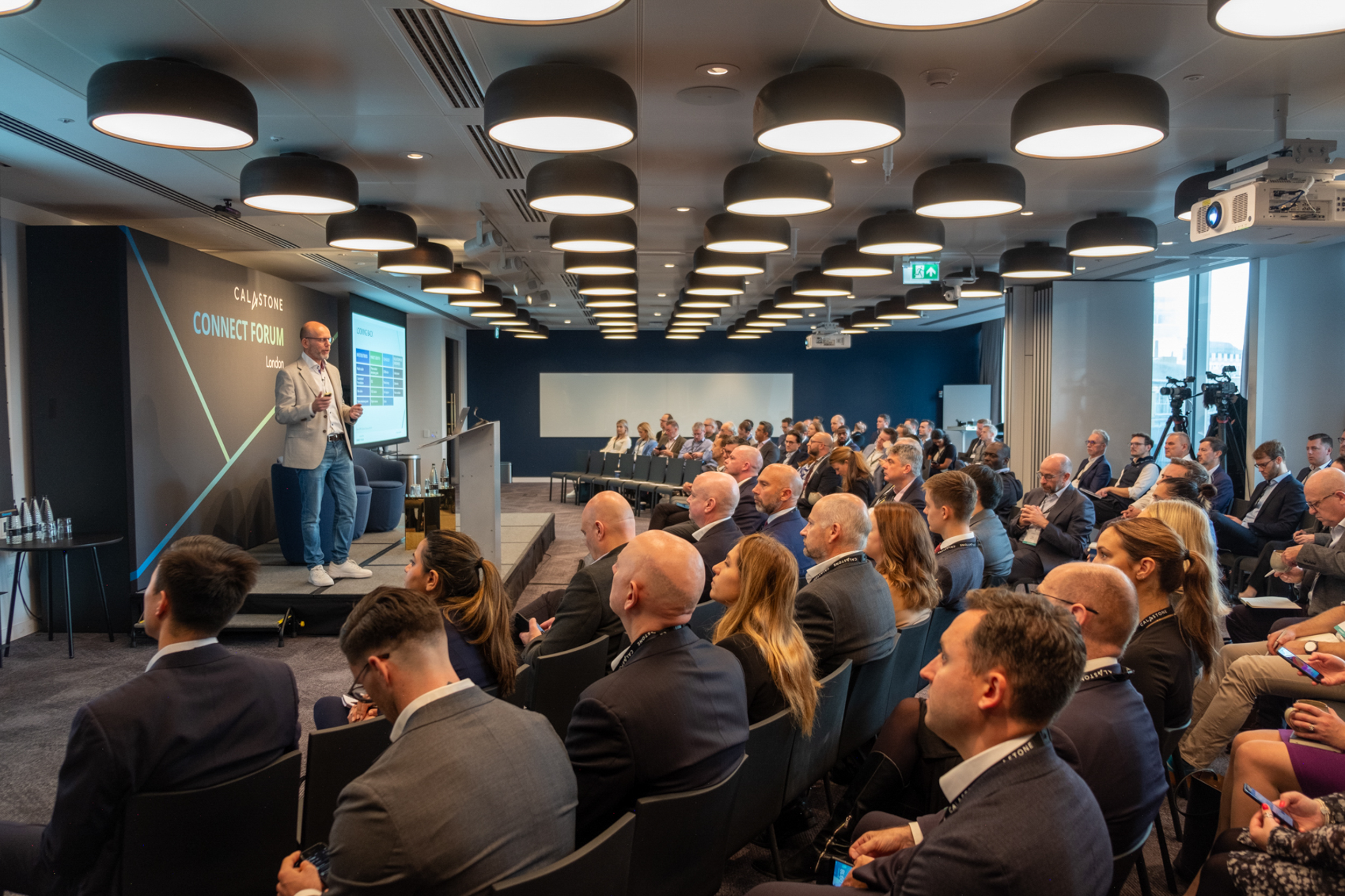Anyone doubting the appetite for digitalisation in asset management should have attended the Singapore FinTech Festival in November, where we demonstrated the tokenisation vehicle we have developed with Schroders. For three solid days the conference was packed with over 60,000 delegates, focused on one overarching priority: the adoption of digital assets. It was impossible to leave without feeling that we have reached an inflection point where progress is going to accelerate rapidly.
It’s no secret that when it comes to innovation in this space, leadership comes from APAC in general, and Singapore in particular. The Monetary Authority of Singapore (MAS) has beaten a path towards digital assets and tokenisation through its Project Guardian, which Calastone’s work with Schroders is a part of. Regulators from across the region and further afield have joined the party, many of them working with MAS, and we are set to see the fruits of that work emerge this year.
Tokenising the asset
After a year of notable progress, what can we expect from APAC in 2024? Top of the agenda will be a more comprehensive embrace of digital assets. This is a journey that has already begun, with some funds now available as tokens on chain. While helping to prove the concept of tokenisation, this approach has limitations: the products exist at the fund level and take a ‘swivel chair’ approach of replicating data across multiple systems. Only the topmost layer of the fund has been tokenised.
The real benefits will not be seen until tokenisation shifts from the fund level to the asset level, as the Calastone/Schroders pilot shows. At this point you can you build and administer a fund end-to-end opening up operational efficiencies, liquidity, and the potential for customisation. The entire fund, not just the means of distribution, becomes a digitised entity with all the opportunity that entails.
In 2024 we expect to see more APAC fund managers experimenting in this space, pursuing the opportunity of fully tokenised investment vehicles. That in turn will represent a meaningful step towards the true digitalisation of fund management – not just as a tool for distribution or administration, but as a platform to build and deliver products more quickly, efficiently and with greater choice for the customer.
Next year this is likely to begin with generalised investment manager strategies. Over time we can expect it to extend to fully customised portfolios that put investors in charge of what assets they hold.
Pursuing digitalisation
The scale and importance of this shift is such that it will change how every participant in the industry works. Custodians, administrators and fund managers all know they have skin in the game and must carve out a meaningful digital strategy that will benefit their business. Where the approach might once have been to wait and look to buy off the shelf, now there is an urgency to get involved and for companies to control their own destiny.
The upshot is that this year we will see a stream of pilots and test cases become a reality of new digital products being developed and operational approaches being trialled, not to mention regulatory systems being codified. Enough work has now been done with DLT, APIs and central books to make the benefits of digitalisation tangible: fewer tech stacks to maintain, improved liquidity meaning the need to run fewer cash accounts, and the opportunity to manage FX risk with better visibility over settlement cycles. The simple fact that an asset can move through the system with fewer touchpoints and reconciliations will have a dramatic impact both on the cost of trading and the bandwidth of providers to focus on new opportunities. That is the prize which fund managers, administrators and custodians across APAC are now rushing to seize.
Singapore and Hong Kong will continue to lead and compete with each other, but this will also be an important year for developing markets in the region, like Malaysia, Thailand and Indonesia, where trading volumes are fast growing and firms unburdened with legacy infrastructure have the opportunity to be more nimble in their approach to automation and digitalisation. In Calastone’s global automation survey last year, 74% of asset managers and servicers in Indonesia said their organisation was ‘mostly’ or ‘fully’ automated, behind only Singapore (75%), with Thailand the next most advanced (69%).
Across all markets, the focus on innovation will be tempered by a recognition that costs must be kept in check. In this context partnerships will become more important than ever: there will be appetite for companies to share the costs of investment where possible, or be accommodative to each other on reciprocal services. That partnership potential extends beyond the region. With the right global partners, asset managers anywhere in the world can take advantage of the same systems and processes that companies in APAC are pioneering.
A year of experimentation
As we look to what the year will bring, one of the fascinating things is how much remains to be decided. While no-one doubts that digitalisation is here and that everyone must participate, equally no-one can be certain which approaches will be the winners and losers. That means the emphasis in 2024 will be on development, with a hive of activity as digital products and processes are piloted and in some cases launched. The industry knows its ultimate destination – digitalisation and tokenisation – and is now racing to establish the route map.
That is bound to lead to duplication and in the medium term a need for consolidation, as well as an agreement on common standards to allow counterparties to work together efficiently. But before optimisation must come experimentation and an understanding of what does and doesn’t work.
When we return to the Singapore FinTech Festival this November, we can expect significant progress to have been made towards this goal. The pipeline will be full with both new products and existing ones that can be delivered more efficiently. There will be a clearer sense not just of where asset managers in APAC are going next, but how. And where APAC leads on digitalisation, the rest of the world tends to follow closely behind. All eyes will be on the region in what is set to be a very significant year.




















